Fun Facts About Asteroids
Written by Aindrila Jana, a third-year undergraduate student
Rocky objects orbiting the Sun that are too minute to be considered planets are asteroids. They are mostly made of rocks and metals.
Written by Aindrila Jana, a third-year undergraduate student
Introduction
When we talk about our Solar System, we just tend to include the Sun and the planets orbiting it. But what about the different rocks and metals orbiting the Sun? There are a lot more to consider.
For example, let’s take Asteroids. According to NASA’s latest count, there are over a million asteroids revolving around the Sun.
What are Asteroids?
Rocky objects orbiting the Sun that are too minute to be considered planets are asteroids. They are mostly made of rocks and metals. Also called Planetoids, you will find millions of asteroids in our galaxy. Found mostly in the asteroid belt between the orbits of Mars and Jupiter, asteroids come in unique shapes and sizes.
The Four Largest Asteroids – they are together called the big four.
1. Ceres (946 km) – which is now no longer an asteroid, it’s a dwarf planet, Vesta (525.4 km), Pallas (512 km), Hygiea (430 km).

Classification of Asteroids
There are three categories we can classify asteroids into
- Chondrite Asteroids- The C type or Chondrite asteroids comprise rocks containing clay and silicate and are dark in colour. They are some of the most ancient objects in the solar system.
- Stony Asteroids– The S type or Stony asteroids comprise rock forming or silicate materials.
- Metallic Asteroids – The M type or Metallic asteroids that contain high metal content in them, namely nickel-iron.
Did You Know?
Asteroids revolve around the Sun in varying orbital shapes: elliptical, circular, and elongated.
But as an orbit gets closer to a large Celestial body, say, Mars or Jupiter, it can be deflected from its orbit toward the large body.
Top 20 Fun Facts About Asteroids In 2023
Here’s a perfect list of the most interesting fun facts about asteroids
1. The first asteroid to be discovered was Ceres.
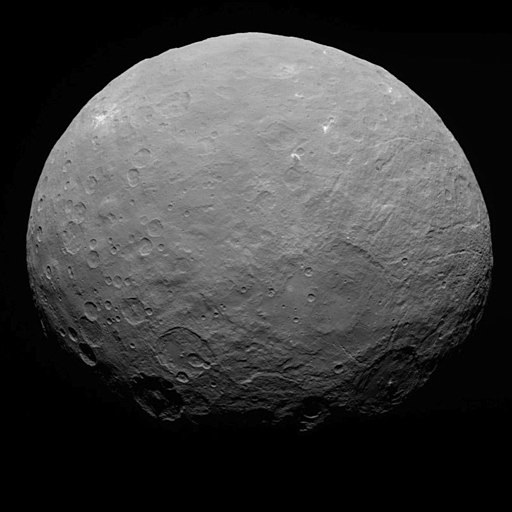
Image Credit: National Aeronautics and Space Administration
CC0, via Wikimedia Commons
Giuseppe Piazzi, an Italian mathematician, discovered it in 1801. But, here’s the interesting part – Ceres was called an asteroid for a long time, but then, because it was really big (much bigger than other asteroids), scientists re-classified it as a dwarf planet in 2006. So now, it’s a dwarf planet!
2. William Herschel, a British astronomer, first coined the term “asteroid” in 1802. The word is said to have roots in Greek, which means “star-like”.
Aster, meaning “star” + -eidos, meaning, “form, shape”
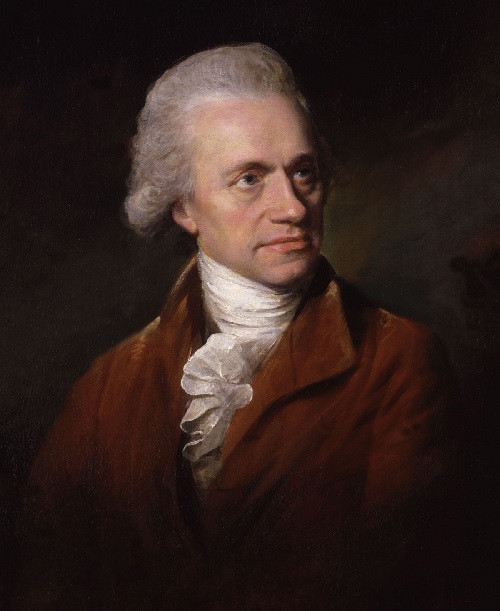
3. Asteroids are considered to be building blocks of planets but are never a planet in themselves.
4. An asteroid about 0.15 kilometers in width, is believed to have exploded over Siberia, causing great harm
5. Near-Earth Objects(NEOs) are asteroids that wander close to Earth. These asteroids can be particularly dangerous if they hit the surface of Earth!
6. Trojan asteroids are those that share orbits with other bodies, mainly planets, or large moons. Jupiter has the maximum number of Trojan asteroids.
Here’s a superb video by NASA that show clusters of Trojan asteroids behind and ahead of Jupiter in its orbit.
7. A meteoroid (a piece of the asteroid) falls into the Earth’s atmosphere on average once every year. The interesting thing is that even though it burns up in the atmosphere before it reaches the surface of the Earth, it still creates a fireball effect. What’s to note is that a meteroid can either be a piece of an asteroid or a comet.
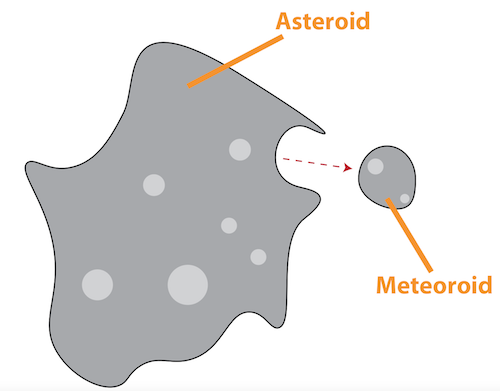
8. Asteroids are considered to be the leftovers of the early Solar System, making them around 4.6 billion years old.
9. Asteroids have moons! Smaller bodies orbit asteroids like asteroids orbit planets. The first such moon was Dactyl, which was found in 1993 to be orbiting a larger asteroid named Ida.
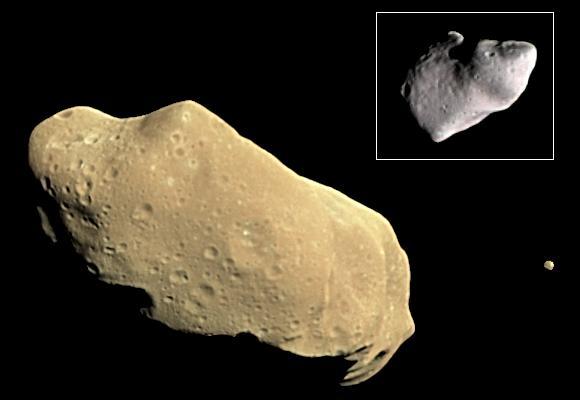
Image Credit: jenikirbyhistory.getarchive.net
10. Asteroids also have rings, which are nothing but circles of dust particles circling the asteroid.
11. Asteroids are irregularly shaped, varying between 2 m to 1000 m in size.
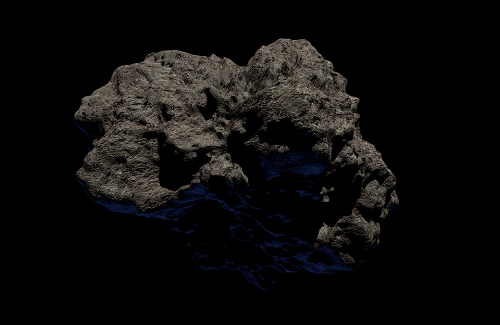
12. Asteroids cannot hold an atmosphere, their average surface temperature being -70 degrees Celsius.
13. Asteroids are rich sources of carbon, silica, and metals.
14. Scientists noticed water trails called gullies on an asteroid named Vesta in 2015. A small asteroid colliding with a bigger asteroid melts the trapped water ice in the smaller asteroid, trickling on the bigger asteroid, and leaving a water trail.
15. All asteroids orbit the Sun in the same direction as the planets.
16. The first spacecraft to orbit an asteroid was the NEAR (Near-Earth Asteroid Rendezvous) spacecraft launched in 1996. It eventually landed successfully on the asteroid Eros in 2001.
17. To study an asteroid near Earth named Bennu, NASA launched the OSIRIS-REx spacecraft in 2016. As it heads back to Earth, its sample container will land in the Utah desert in September 2023, from where scientists will analyze the residue scooped up from the asteroid’s surface.
18. Sometimes, asteroids crash into planets. The most famous of asteroid crashes on Earth was when an asteroid crashed into the Yucatán Peninsula and cleared out all non-avian dinosaurs — along with three-quarters of the species on Earth.
18. Interesting asteroid names. There’s one asteroid named Arthurdent, which is named after the hero from The Hitchhiker’s Guide to the Galaxy, and another named after the late rock musician Frank Zappa. The asteroid named Mr. Spock was named after a cat who was in turn named after a Star Trek character!
19. An asteroid named Apophis, estimated to be about 340 meters across, has been a major cause of concern after it was discovered in 2004. However, after careful study, NASA later announced that we’re safe from Apophis for at least the next 100 years.

created by The Planetary Society
20. The largest asteroid is Vesta, its area is about twice the area of the state of California.
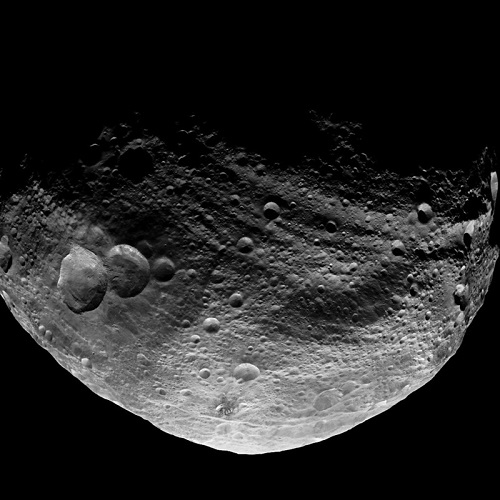
Vesta is the brightest asteroid in the sky. For this reason, it can be sometimes seen from Earth with the naked eye.
What’s also one of this asteroid’s unique features is that it has light and dark patches on its surface (something like the moon)
Previously, Ceres was considered the largest asteroid as it has a radius about a third that of our Moon, but later it got reclassified as a Dwarf Planet.
Where are asteroids found?
Most asteroids are found in, what’s called, the main asteroid belt. This is the region between the orbits of Mars and Jupiter.

Image Credit: astronomy.swin.edu.au
We’ve already mentioned above that some asteroids, called Trojan asteroids, move in front of and behind Jupiter. These are called Trojan asteroids. Asteroids that come close to Earth are called Near Earth Objects, NEOs for short.
Research shows that the asteroid belt contains between 1-2 million asteroids larger than 1 km in diameter, and many millions of smaller ones. About 1/3rd of the asteroids in the main belt are grouped into ‘families’, meaning that they share the same orbits.
It’s true that the vast majority of asteroids are found in the main asteroid belt, but there are other asteroids found all over the solar system.
For instance, the Trojan asteroids are minor bodies that share their orbit with Jupiter. Centaurs are another population of asteroids found beyond the main asteroid belt and mainly remain within the confines of the outer solar system. Near-Earth asteroids (NEAs), which are more than 22,000 in number, have orbits close to Earth’s orbit, which potentially makes them hazardous.
Asteroids lying within the main belt are fairly stable but away from the main belt, asteroids become subject to larger gravitational perturbations by the planets they are closer to resulting in their orbits expanding and evolving. The asteroids near the Earth’s orbit need to be continuously monitored in case a previously harmless asteroid has shifted to a more dangerous path.
Who discovered asteroids?
We’ve already spoken about Ceres, the first asteroid to be discovered in 1801 by Giuseppe Piazzi, an Italian mathematician.
Here’s more about how they were discovered
- Bode’s law, which suggested there should be a planet between Mars and Jupiter, fascinated astronomers in the 18th century. By the end of the 18th century, a group of astronomers named ‘Celestial Police’ had used the observatory at Lilienthal, Germany, to hunt down this unknown planet.
- But ultimately, it was Giuseppe Piazzi who first discovered the ‘missing planet’ from the Palermo Observatory which was finally named Ceres.
- Later, from 1801-1808, three small planets, Pallas, Juno, and Vesta, all smaller than Ceres, were together named Minor Planets, which are basically asteroids.
Finally, after Astrea was discovered, a class of celestial objects was developed which came to be known as asteroids. A belt of these small bodies existed between the orbits of Mars and Jupiter. This collection of space debris eventually together was called asteroids, which were actually there in place of the speculated ‘missing planet’.
More than 400,000 asteroids have now been spotted in the main asteroid belt.
Hope you like this article – check out more cool space stuff, here
You May Also Like:
Why Are Planets Round
Fun Facts About Solar Systems
Fun Facts About Galaxies

Better Your Child’s G.K. In 3 Minutes – Get This Free Newsletter
Get fun facts, simple and easy news, quizzes, and lots of other interesting things to read in your mailbox – for free! It’s what we call GK-on-the-go!
I Kid You Not now has a large readership across India and also parts of the world. If you want to write for us, you can submit your story here. You can also apply to become a news anchor. Apply here



Comments